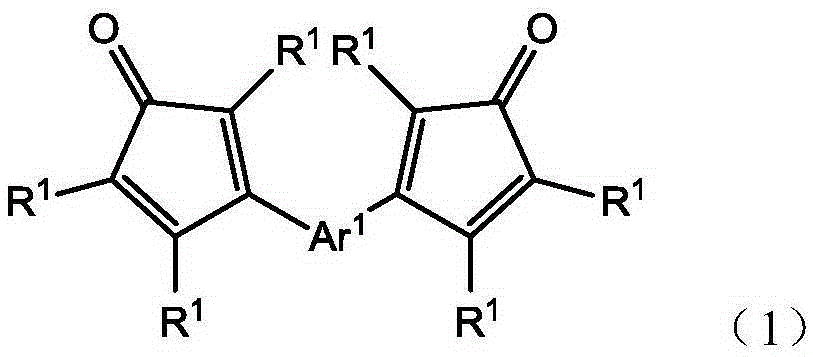Silylated polyarylenes
An arylene and aryl technology, applied in the field of polyarylene materials, can solve problems such as incompatibility
- Summary
- Abstract
- Description
- Claims
- Application Information
AI Technical Summary
Problems solved by technology
Method used
Image
Examples
example 1
[0036] Example 1: To a multi-neck round bottom flask with a stir bar was added via a powder funnel diphenylene oxide bis(triphenylcyclopentadienone) (DPO-CPD, 2.75 g, 3.52 mmol) followed by alkyne monomer 1, 3-Bis[(trimethylsilyl)ethynyl]benzene (1,3-TMS-DEB, 1.00 g, 3.70 mmol) and reaction solvent γ-butyrolactone (GBL, 20 g, 16% solids). The reaction was stirred gently at room temperature to obtain a homogeneous mixture. The flask was then equipped with a reflux condenser and an internal thermocouple probe attached to a self-regulating thermostat attached to a heating mantle. The dark maroon contents of the flask were warmed to an internal temperature of 205°C and maintained at this temperature for 96 hours, then cooled to room temperature by removing the heating element. The resulting dark maroon solution was transferred to a vial. Gel permeation chromatography on this crude mixture reveals that M n = 5362 Da and M w = Peak molecular weight distribution of 6678 Da.
[...
example 2
[0040] Example 2: The procedure of Example 1 was repeated except that the solvent was benzyl propionate.
example 3
[0041] Example 3: To a multi-neck round bottom flask with a stir bar was added diphenylene oxide bis(triphenylcyclopentadienone) (2.75 g, 3.52 mmol) followed by 1,3-bis[(trimethoxy silyl)ethynyl]benzene (1.36 g, 3.72 mmol) and the reaction solvent N-methylpyrrolidone (25 g). The reaction was stirred gently at room temperature to obtain a homogeneous mixture. The flask was then equipped with a reflux condenser and an internal thermocouple probe attached to a self-regulating thermostat attached to a heating mantle. The contents of the flask were warmed to an internal temperature of 195°C and maintained at this temperature for 96 hours before the heating element was removed.
PUM
 Login to View More
Login to View More Abstract
Description
Claims
Application Information
 Login to View More
Login to View More - R&D
- Intellectual Property
- Life Sciences
- Materials
- Tech Scout
- Unparalleled Data Quality
- Higher Quality Content
- 60% Fewer Hallucinations
Browse by: Latest US Patents, China's latest patents, Technical Efficacy Thesaurus, Application Domain, Technology Topic, Popular Technical Reports.
© 2025 PatSnap. All rights reserved.Legal|Privacy policy|Modern Slavery Act Transparency Statement|Sitemap|About US| Contact US: help@patsnap.com



